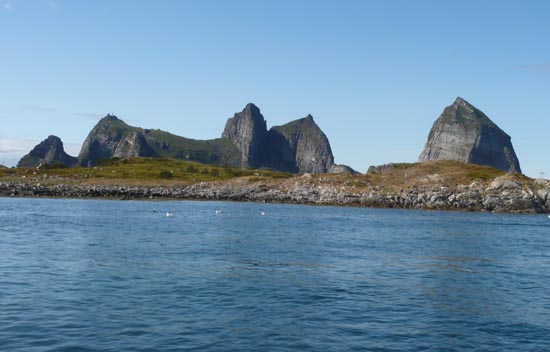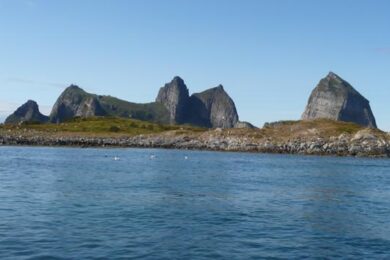All pictures courtesy of Maria Jefferis and Shot2Bits.net
Erlend Mogård-Larsen is a good example of what the Norwegians would call havfolket, or people of the sea. His long blond hair is swept back into a pony tail and he is protected from the sea air by a chunky woolen sweater. His explanation for why it doesn’t matter that the Traena Festival is in such a remote place — an archipelago of islands in the Arctic Circle off the North West coast of Norway — is convincing. He states simply: “I have never thought about the remoteness in a negative way, just positive.”
The rugged Viggo Mortensen lookalike started this festival in 2003 and it is an annual gathering which is unusual for many reasons. Most festivals attract rather dour superlatives such as ‘most muddy’ or ‘most expensive’ or ‘most predictable’. Traena, which takes place for one weekend each July, is more remarkable because it is the world’s most remote music event. They would also be well within their rights — even though this is an entirely subjective claim — to promote it as the world’s most beautiful event of its kind.
The remoteness and the spectacular, harsh beauty of the place are the key: “I knew I wanted to do a festival were people had to travel to get there. The travel is a very important thing with the Træna Festival. People who are travelling for 10-12 hours to get to here are focused and completely in tune with their surroundings. You could get from Oslo to Bangkok in the same amount of time. I hate city festivals. You take the bus for 20 minutes and go into an area with nicely dressed people. The travel and the experience on the way is 50% of the festival experience.”
He is right of course. It’s a two-hour flight north from Oslo to Bodø, which — despite being the capital ‘city’ of the Nordland municipality — is barely a village by most people’s standards, and marks the point on the mainline where the rail network stops. We sail out in the morning. I don’t understand a word of Norwegian but the Captain’s graphic use of wild gesticulation imparts three important facts: don’t fall overboard; if you do fall overboard don’t expect to get rescued; and they are running low on toilet paper, so go now or face with the possibility of using your thumb to clean yourself. For the first two hours we sail down the onyx dark waters of a fjord, with mountains jagged against an unblemished blue sky. It seems that up here in the Arctic Circle things are sketched with a lighter touch, as if someone said ‘Well, no one’s going to come up here so keep it nice and simple.’ The scenery resembles a childlike drawing: mountains are huge triangles of rock sticking out of a ruler-flat horizon. Further out to sea, which is the deep blue of broken Venetian glass, a whale breaks and re-breaks the surface as people gasp and point. We pass one of Norway’s biggest glaciers, which hangs in gravity-defying majesty hundreds of metres above the mountain peaks on the shoreline.
The Captain and his crew come round continually handing out lager and wine. From this moment on presume that everyone mentioned in this piece is drinking at all times unless otherwise stated.
Past the glacier is a mountain that looks remarkably like a man on horseback. It is wreathed in cloud and both rider and mount look as if their breath is condensing in the crisp air. “The horse even has ears”, says our genial guide, Wyndham, in awe. If this strange sight signifies anything other than the hallucinatory properties of clean air on city dwellers who visit, it is that some sort of surreality threshold has been passed; that the entire rest of the trip will be spent in some kind of pleasant fugue state of stumbling around with one’s mouth hanging open. I listen to the first four Black Sabbath albums on my iPod looking at mountains from the prow of a boat.
It is supremely righteous.
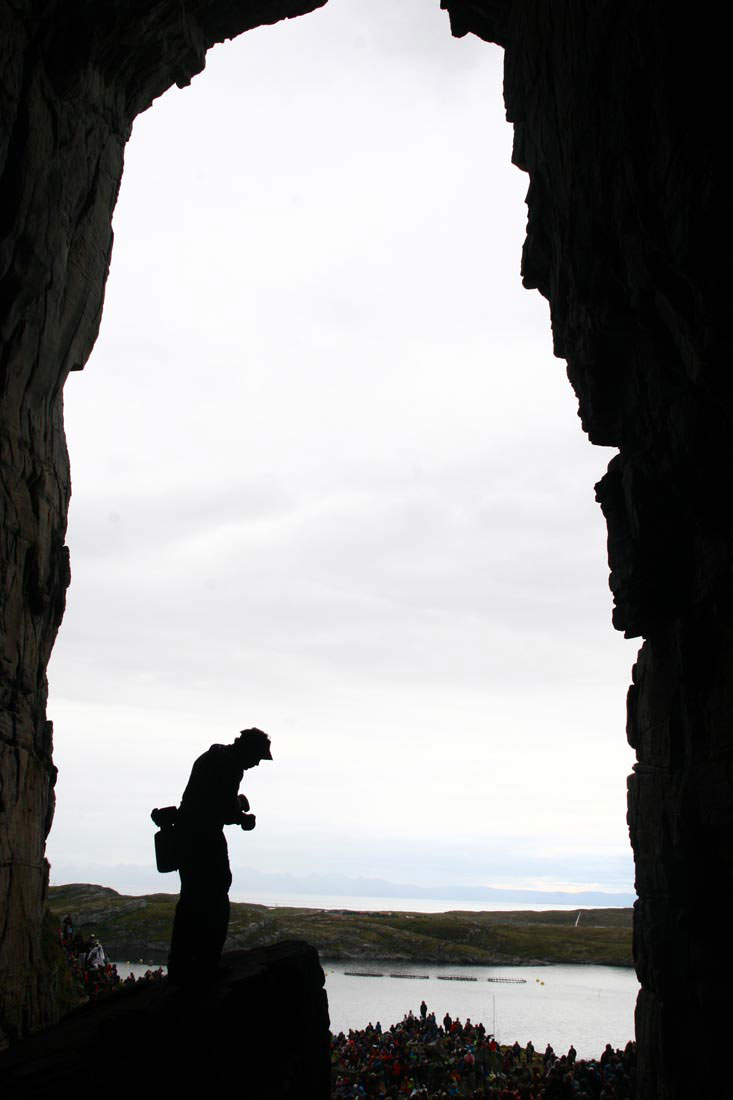
When we first see Traena it solidifies out of the haze and appears to be the top third of the Wu Tang Clan symbol made out of solid rock and sticking hundreds of feet out of the water. There aren’t many people on this group of islands, about 380 in total, and they all pitch in to help. Our cheerful driver Snorre, who takes us from the harbour to the chalet we’re staying, turns out to be the father of Ida Maria — one of the country’s hottest musical exports and excellent Friday night headline act.
The sun is shining bright when we are welcomed aboard the Vulkana, a former whaling vessel that has been converted to a sauna ship. The sun is shining bright the entire time we are there. It casts a lazy lasso-like loop in the sky, dipping briefly behind a hill for ten minutes every day near midnight before rising again, causing a temporary dip in light like during a partial solar eclipse. It never gets dark and, for most of the time, we enjoy T-shirt weather, with the occasional refreshing blast of arctic wind. The ship belongs to Erlend and reflects the complex attitude that most Norwegians have toward their heritage industry of sea fishing. He says: “This boat killed maybe 500 – 600 whales, using that harpoon gun there. The body would be laid lengthways across the hull and cut open and dealt with down there.”
He points downwards to the deck below us where there is a Buddha statue hanging from the wall and the entrance to a sauna: “Now it is used for less violent, less destructive purposes.” There are only a few whaling vessels left but it still continues under much tighter controlled supervision. And as he points out, there are bigger (or smaller) things that the ecologically concerned should be worried about: “There are 130,000 whales living by the Norwegian coastline. This summer they shot 888 of them. I am more worried about the cod stocks and the wildlife. I’m not a big fan of the oil industry, for example, especially in Lofoten and Vesterålen where they may have found oil reserves.” The festival has a strong ecological conscience and it’s hard not to see why. The last thing this place needs is to have a massive oil refinery built on it, pumping out smoke and polluting the otherwise clear waters. Antipathy toward the oil industry is something that will be mentioned by pretty much everyone over the age of 30 that we meet while we are here.
After having a traditional sauna, we descend into the belly of the ship for a Turkish hammam or steam bath. The dark room with multi-coloured lights glowing behind the steam has a plunge pool full of sea water drawn in from the ocean. Outside on wooden benches I sit with Frida Hyvönen, the Swedish singer-songwriter, while the DJ Ewan Pearson entertains us with a brief history of the evolution of the whale, which may or may not be descended from a small, land-living badger. A sushi chef brings us some food through, presenting me with a brief dilemma. I haven’t eaten any kind of meat in 25 years but I always said if I was abroad and in danger of offending a host and there was nothing else on offer I’d eat flesh. The first thing I have is a delicately fried cube of whale meat on a skewer with wasabi. It is delicious. I eat a raw scallop in soy sauce, which is a moment of unprocessed sublimity. I should stop there but I also have miso soup with wild cod in it. I can hazard a guess which of these things will make people angry when I get home; the ingestion of the keenly protected whale or the dangerously depleted cod.
As with anything to do with animals, sentimentality rules the day. Whales are giant creatures and we invest them, anthropomorphically, with plenty of human characteristics; perhaps even fairly in some cases. I’m not a sentimental person, however, and am not vegetarian because I subscribe to an animal rights-based philosophy; it’s mainly for humanist reasons. I don’t eat meat because I can’t afford to eat flesh that has been raised and slaughtered humanely outside of the factory farming system. I don’t care about the life of one whale that much more than I care about the life of one badger. It is the factory farming system that is wrong; that is inhumane; that causes sickness and obesity in the working classes and the poor the world over. So you’ll forgive me if I keep on worrying about boring old pigs and cattle in massive mechanized farms. Besides, whale is absolutely delicious. I have no point of reference but someone tells me it tastes like venison. WHAT HAVE I BEEN MISSING? I MUST HAVE MORE WHALE!
Well, that’s what I think before I go to sleep that night. When I’m asleep I dream of the whale.
“Why did you eat me?” asks the unhappy looking mammal.
“Er, it was only about 2cm cubed”, I say.
“Don’t be facetious”, it says and swims off in a bad mood.
I wake up the next day and admit to myself that subconsciously at least, I’m one sentimental, anthropomorphising hypocrite, and unavoidably a vegetarian for life now, whether I like it or not. Sorry Mr Whale.
Below the boat is not a whale graveyard but a whaleship graveyard. When the restrictions on whale hunting were introduced, there was little that could be done with the vessels. Many were scuttled where they were anchored. Erlend purchased the Vulkana from a man about to sink it after a drunken bet. It took two years to convert it to the floating sensation enhancer that it is now.
He had the idea for the festival while visiting his grandma at her home on the island: “I was 12 years old the first time I thought about setting up a festival at Træna. I had just discovered my brother’s record collection and loved the triple album cover from the Woodstock festival. It inspired a young soul. It took another 22 years to do it.”
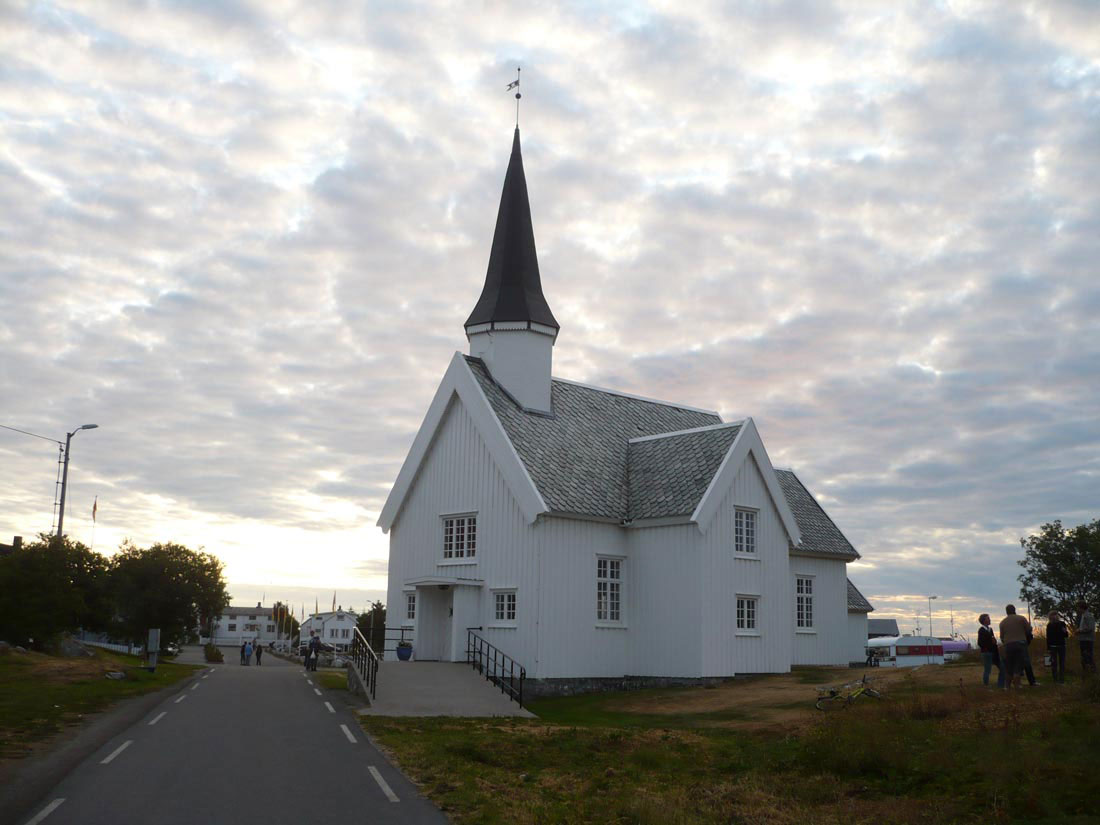
The entire festival site is pretty small, with only 2,000 people attending. The patch of land has a stage, a music tent, a seafood restaurant and some bars and would all easily fit inside one of the smaller fields at Glastonbury.
Opening proceedings are G.O.D.S., Trondheim’s biggest hip hop act. With six MCs and one DJ, they’re like the Wu Tang Clan of the Arctic Circle with (judging by their clothes) perhaps an interest in the nautical. Who are their members? Ghost Face Killer Whale? Method Manatee? Old Dirty Baffin Island? U-Cod? We should be told.
Chilling things right down in the tent and adding some glamour to the proceedings is Frida Hyvönen who brings something of the music hall and torch song tradition to the island. Of course, Scandinavian tastes can sometimes be described as ‘acquired’ to put it politely, and some of the acts — especially the lager fuelled pub rock with ska stylings of Kaddmaddafakka and festival reggae of Jodski — do little to inspire confidence. Or enjoyment.
At midday (or is it midnight? It’s hard to tell) the next day, all memories of these acts are soothed away by the sublime performance of Rockettothesky. This show in the Husoy wood-framed ‘stave’ church is the musical highlight of the weekend. It’s the vision of Jenny Hval, who crafts beautiful music incredibly quietly, building new ground between the childlike visions of Fever Ray, the northern beauty of Bjork and and the electronic ruminations on maternity of Kate Bush’s Ariel. A good quarter of all the people who live here are crammed into the church in absolute silence as she plays under the large carved oak crucifix and effigies of fishing trawlers.
Today on the main stage it’s as if the geek has inherited the earth. We’re treated to a brilliantly bouncy set by slick art funketeers, The Whitest Boy Alive: massive spectacles, collegiate scarves and Farah slacks are the order of the day as they channel the spirits of Talking Heads, Franz Ferdinand Steely Dan into a performance which is stone to the ivory-coloured bone. The crowd erupts when they deliver a hectic medly of Inner City’s ‘Good Life’ and ‘Out Of Space’ by The Prodigy.
Most entertaining is the unhinged sight of Slagsmalsklubben (Hardcore Fight Club) from Sweden. Six extravagantly dressed nerds lined up in front of banks and banks of vintage synths, samplers, syn drums and laptops, leading the entire crowd in a preposterously upbeat happy house rave. The music ranges from Euro hi-NRG to Balearic to funky house to electro and back again, often within the space of one song. The emphasis is on party-friendly madness and the second it starts sounding too serious they put a donk on it like a junior Hot Chip at an all-ages rave; preposterous but preposterously good fun. For every utterly crowd-zapping slab of clownstep there’s a genuinely great moment, as on the song where DJ Assault’s Miami booty bass seems to be meeting Martin Denney’s Tiki lounge exotica head on.
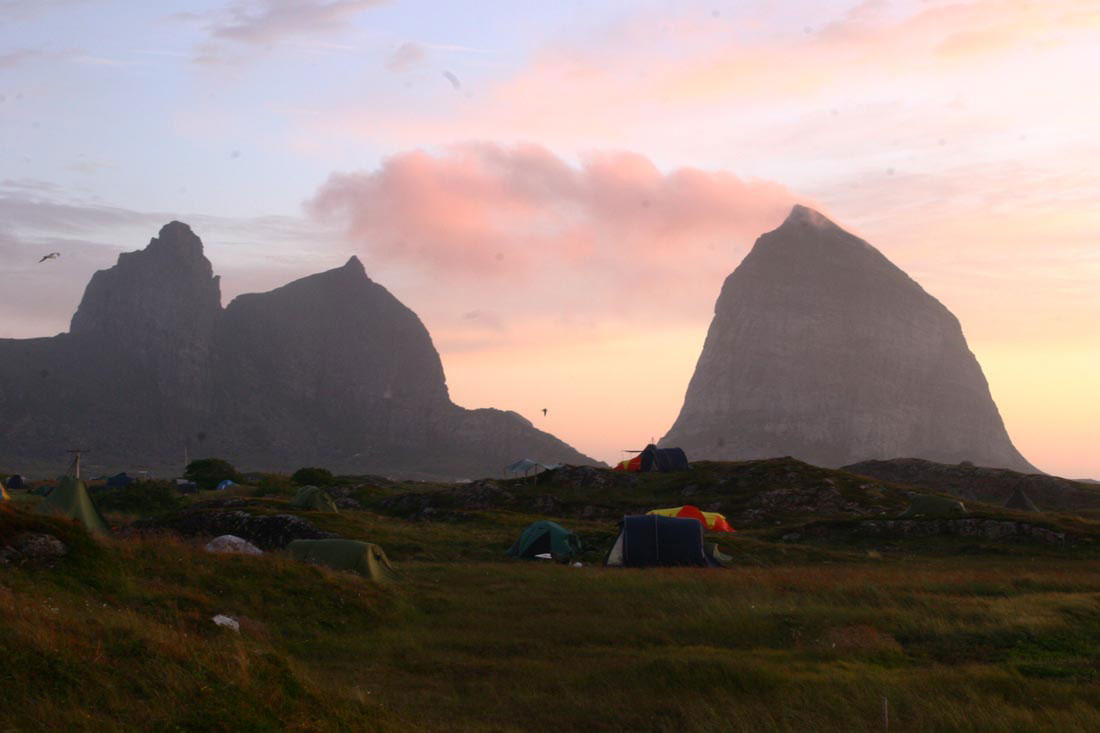
On the Saturday a speedboat blasting out ‘Black Or White’ by Michael Jackson takes us over to a nearby island. “It’s like Miami Vice with herring”, notes Ewan. Once we disembark we walk up a mountain. Internally.
Until recent years, the remote location was used to ‘keep an eye’ on the Russians and on one of the peaks there is an incongruous-looking building shaped like a large golf ball. To get to it we start walking up the man-made, steep tunnel. The odd candle doesn’t provide much in the way of illumination. Half way up, someone starts playing doom-laden opera music through a speaker system that has been installed here with the sole purpose of terrifying the handful of visitors it gets every year. Once at the top and out into the daylight, the scramble down the other side is just as fraught. Drunk Norwegians slip off the path and roll down past us, laughing as they go. It’s like the opening scene from Werner Herzog’s Aguire, Wrath Of God but with drunk Norwegian sailors instead of conquistadors.
Eventually we round the side of the mountain to see Kirkhelleren, a huge, striated limestone cavern, where the original Traena settlers lived in the Stone Age 10,000 years ago. Today it is being used as a venue for a performance by one of Norway’s biggest stars, Sivert Høyem. The former Madrugada singer is using all the massive resonant potential of the setting to great effect. Mixed in with stripped-down original material are numbers by Bob Dylan and Gram Parsons but they end on a triumphant version of the old Lead Belly song ‘Goodnight Irene’, which has every single person on the island holding their breath. Ingrid, Sivert’s co-vocalist, crowned in a wreath of flowers, has to stand a foot away from her mic so the echoes don’t overwhelm the gentleness of the number. As we make our way back to the main island on a flotilla of fishing boats, rockets are fired from the crest of the rocks high above our heads. Back on the site Ewan ends things in fine style opening with Radiohead’s ‘Idioteque’ and ending up with Escort and Chic.
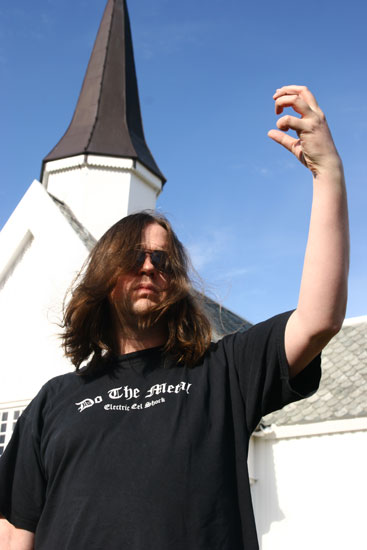
When in Rome
The next day we stop off for another blissful visit to the steam ship Vulkana before leaving the island. In the sauna with Sivert, Ingrid and Harry, the former drummer from Turbonegro, beers are handed out. I’m lost in some kind of reverie. I realize that everyone’s laughing at me. They’ve been pouring more and more water on the coals in an attempt to see who can make it so hot that I’ll have to get down from the upper bench.
I’m so chilled out I didn’t even notice the skin blistering heat. Their roadie comes in and comments: “You’re pretty tough for an English guy.” I correct him: “I’m pretty relaxed for an English guy. I wouldn’t have lasted five seconds in here four days ago.”
Harry tells me who the best fishermen are out of the Norwegian black metal community. Emperor are apparently quite good anglers, but no one — NO ONE — comes close to Fenriz from Darkthrone. He tells me a crazy story about him, Fenriz and one of the world’s leading experts on Arctic moss having a jam in his snowbound hut. I’m so happy I could burst.
“You know, I was born to make men cry”, says Ingrid. The other men in the sauna nod sagely. Out of the window a whale breaks the surface in the distance. This place must be some kind of dream. It certainly is a dream of a festival. As Erlend says: “I want Traena to be the festival everybody has to visit one time in their life.”
What a sublime wish.
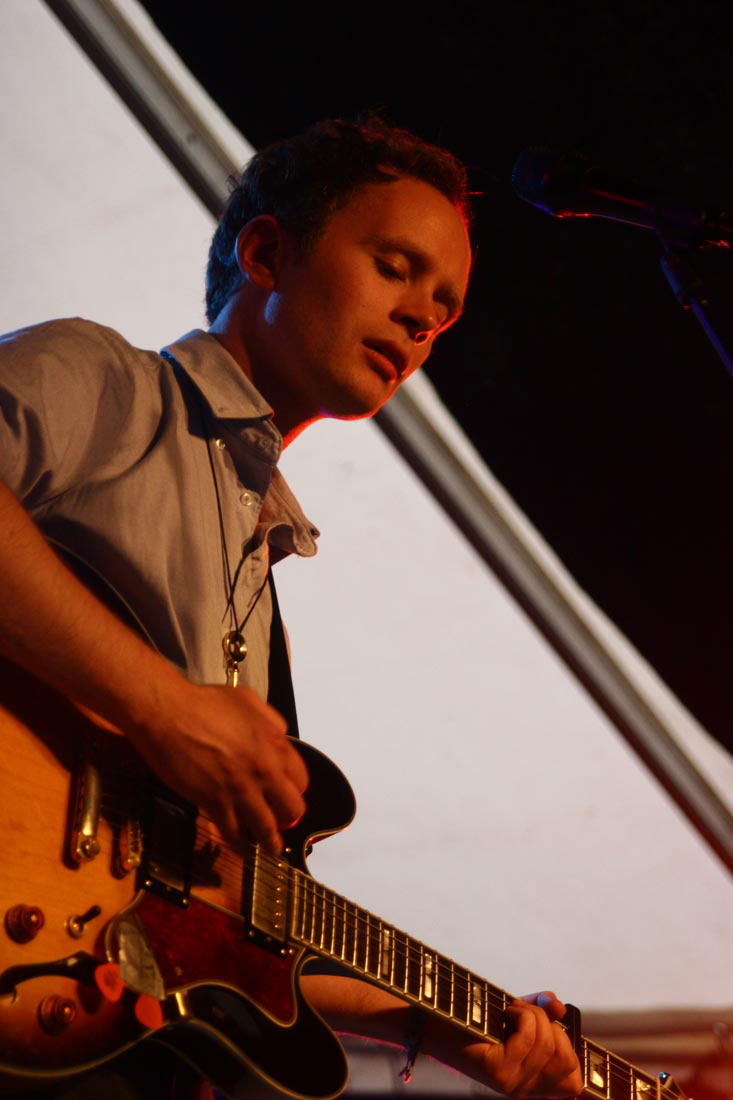
Jens Lekman
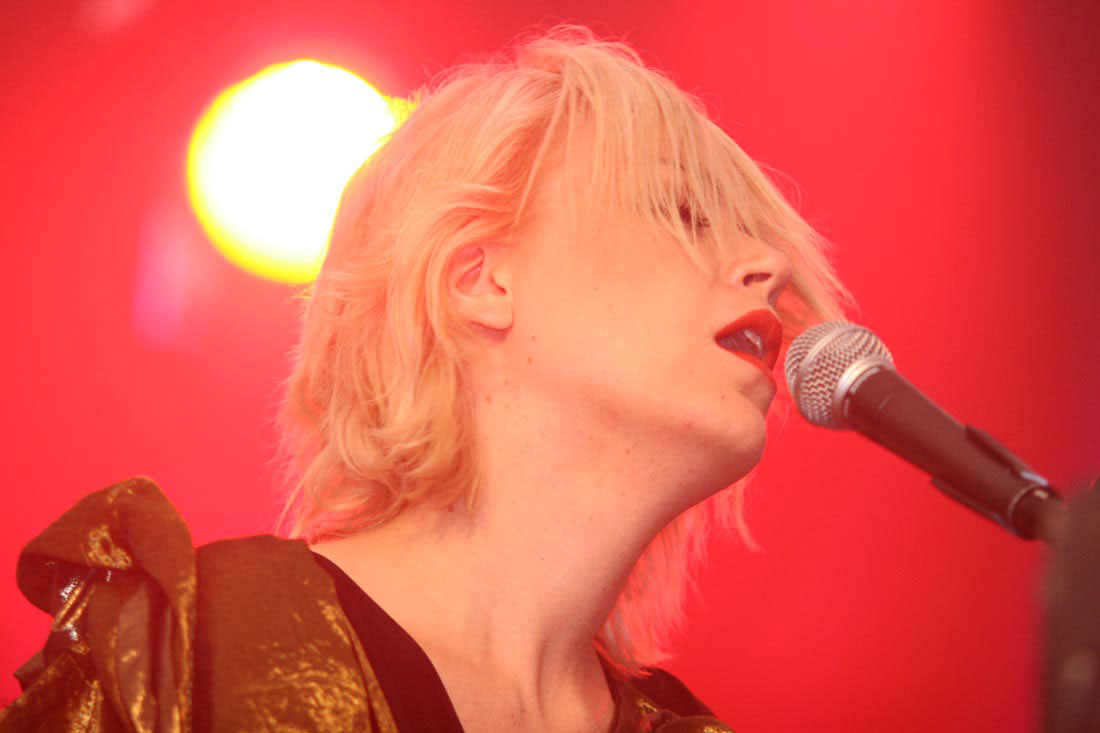
Frida Hyvönen
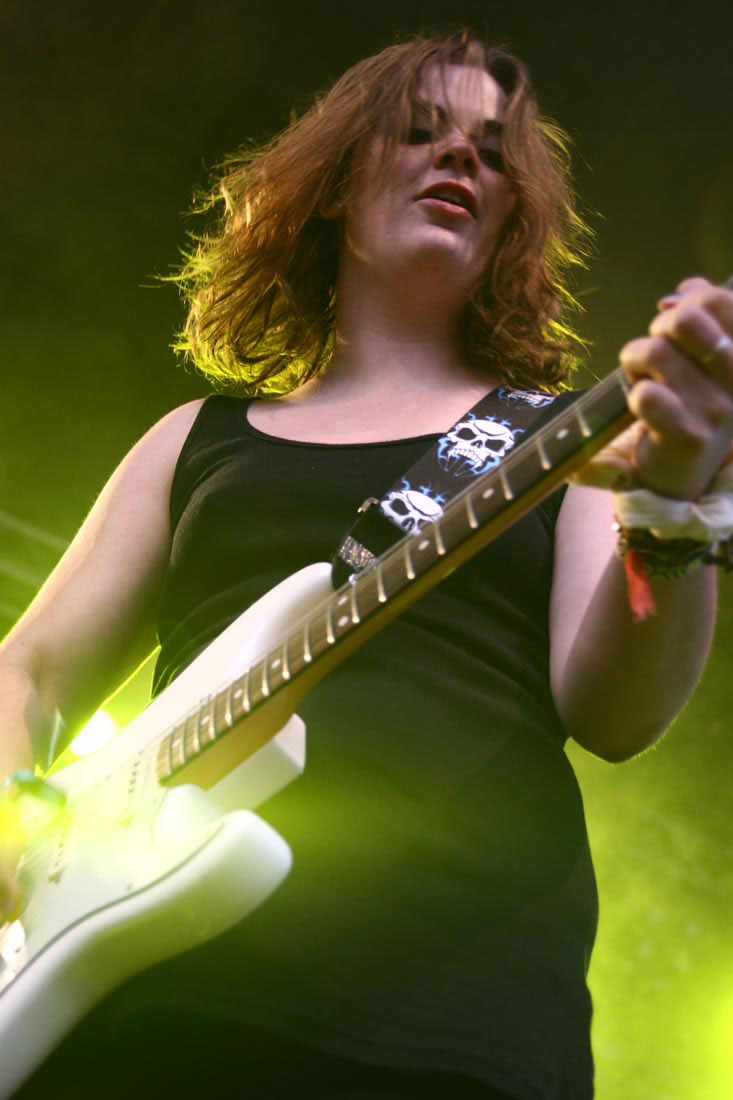
Ida Maria
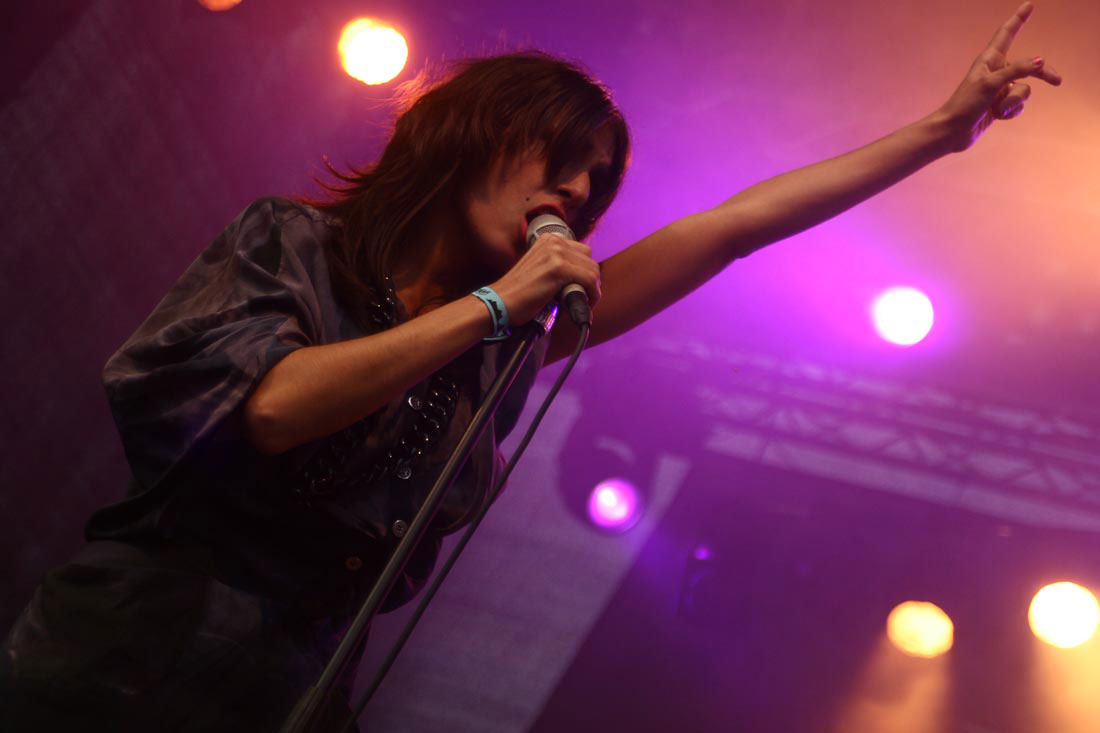
Wildbirds and Peacedrums
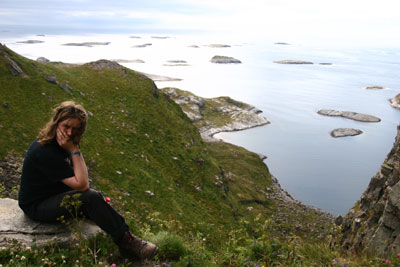
The author after rare moment of physical exertion

